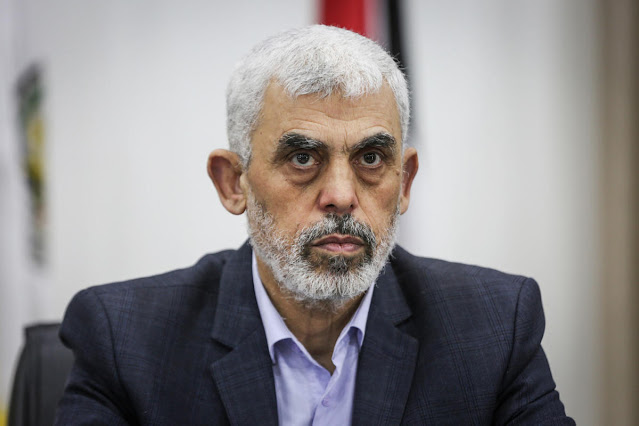Yahya Sinwar, the mastermind of the October 7 attacks and leader of Hamas, has been killed. His death was confirmed on Thursday by the Israeli government and supported by a powerful photo of Israeli military personnel standing over his body.
Sinwar, who remained in the tunnels of Gaza as other leaders sought refuge abroad, launched the current war by sending an army of terrorists into Israel under the cover of thousands of rockets — to massacre children, rape women, and burn homes to the ground. By the end of that horrific day, 1,200 were dead and 251 were taken hostage and dragged into Gaza. In over a year of fighting, Sinwar has refused to surrender and release the hostages, as he preferred to have his people suffer if it meant that world opinion, and the U.S. government, turned against Israel.
The terrorist leader had previously been held in an Israeli prison, where he survived brain cancer owing to treatment by Israeli physicians. But in 2011, he was one of the 1,000 prisoners released as part of the deal to secure the release of abducted Israeli soldier Gilad Shalit. Once released, he rose up the ranks of Hamas and became its de facto leader in Gaza.
The killing of Sinwar is a major victory for Israel, both operationally and symbolically. As long as Sinwar was alive and defiantly leading Hamas, it was difficult for Israel to view its costly war in Gaza as a success.
His death follows a string of major successes by Israel — the killing of Hamas’s political leader Ismail Haniyeh, of Hezbollah leader Hassan Nasrallah, and of dozens of other high-ranking leaders of both terrorist groups. Coupled with the overall campaign, Israel has dealt a significant blow to the proxies of Iran as it contemplates retaliatory steps against Iran itself.
The news also serves as a severe indictment of the judgment of President Biden and Vice President Kamala Harris, who spent months warning Israel against an invasion of Rafah, where Sinwar was killed. Biden said going into Rafah was a “red line” for him, while Harris warned there would be “consequences” because she “studied the maps.” That Sinwar was killed in Rafah vindicates the insistence of Israelis that Rafah was a stronghold where they would find Hamas’s leadership.
While the usual suspects are now using Sinwar’s death as yet another way to pressure Israel into immediately ending the war, the job in Gaza will not be done as long as the roughly 100 hostages (both alive and dead) remain in captivity and Hamas is still in control of the territory and in a position to rebuild.






.webp)
%20(1)%20(1)%20(1)%20(1)%20(1).png)

%20(1)%20(1)%20(1).png)

